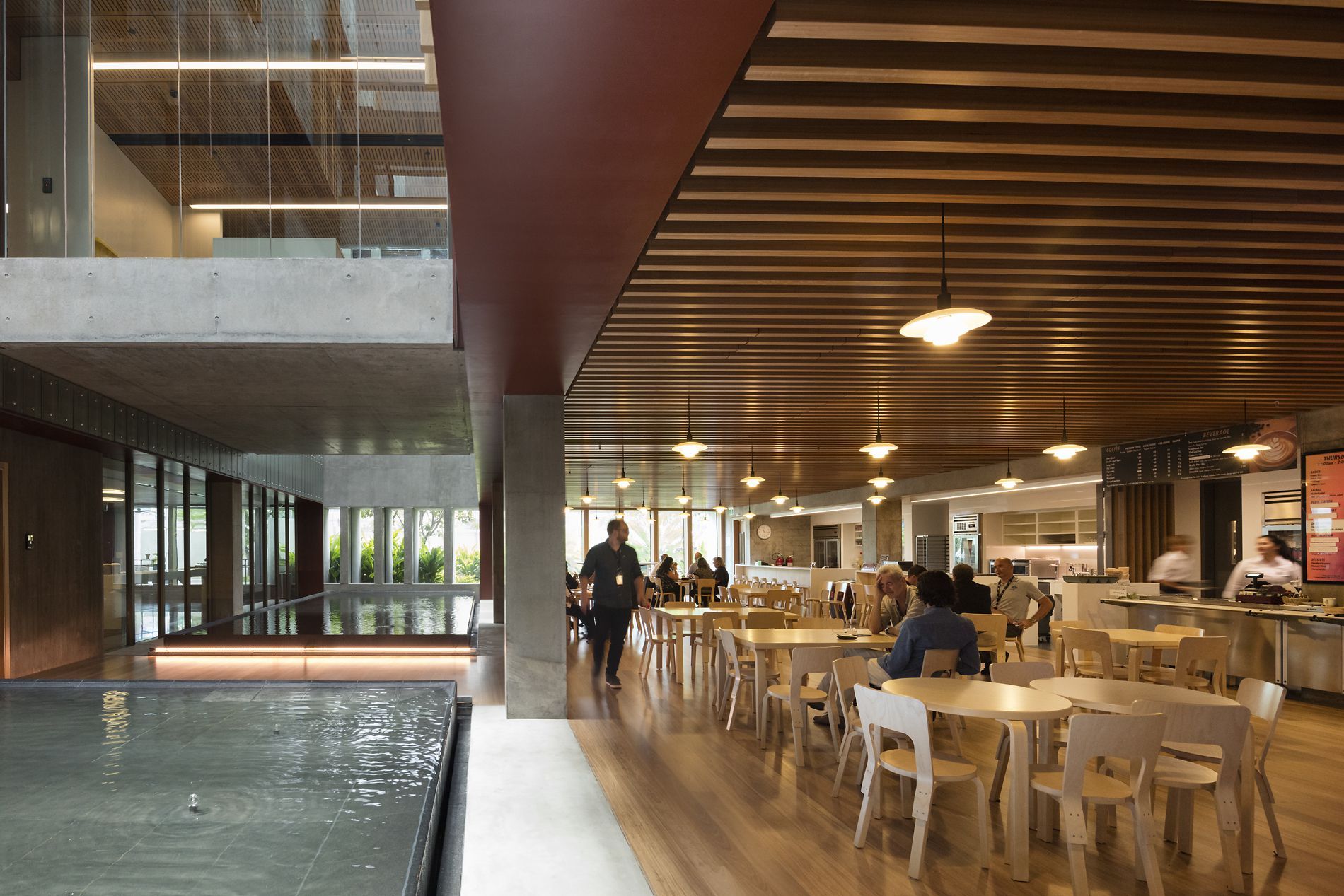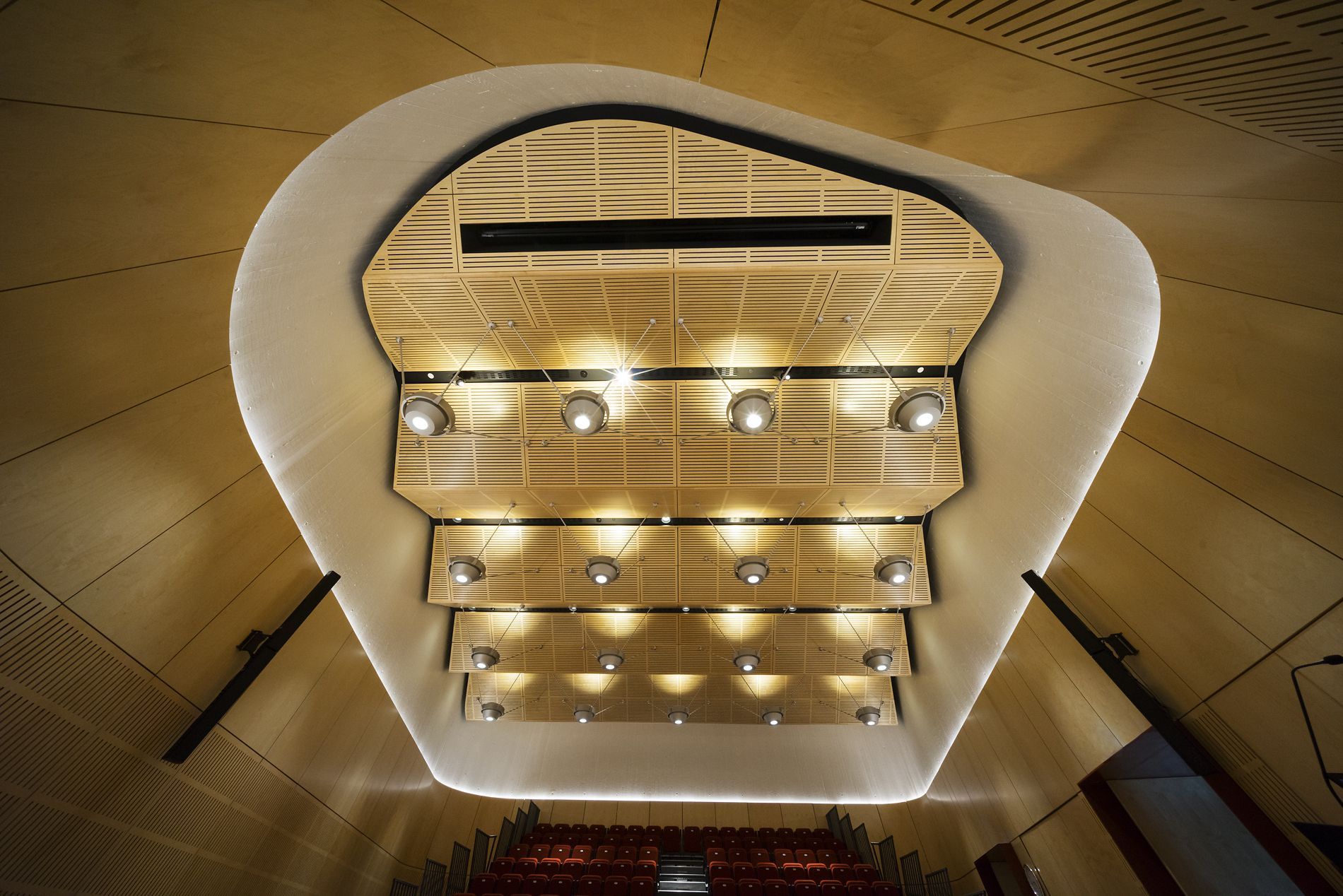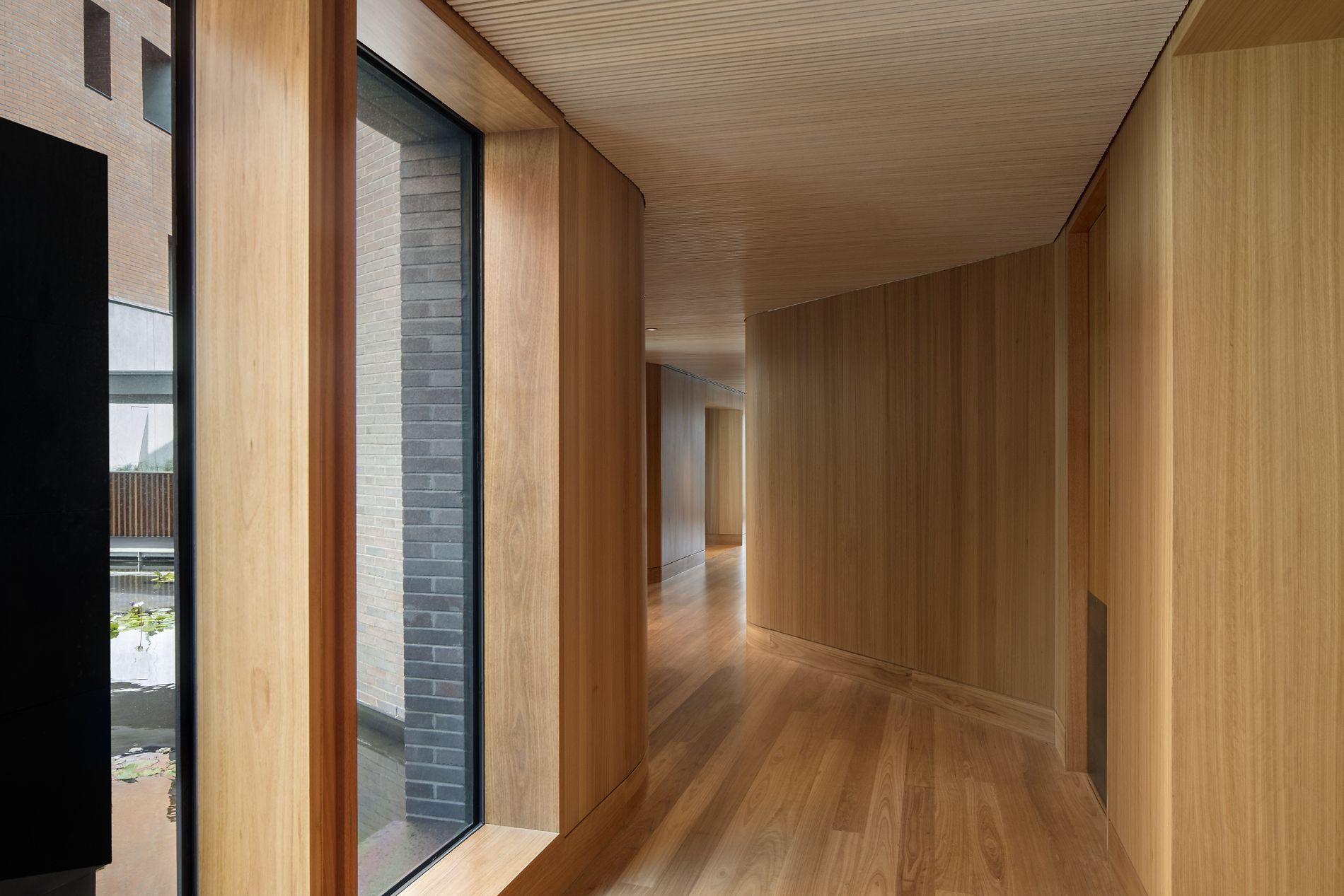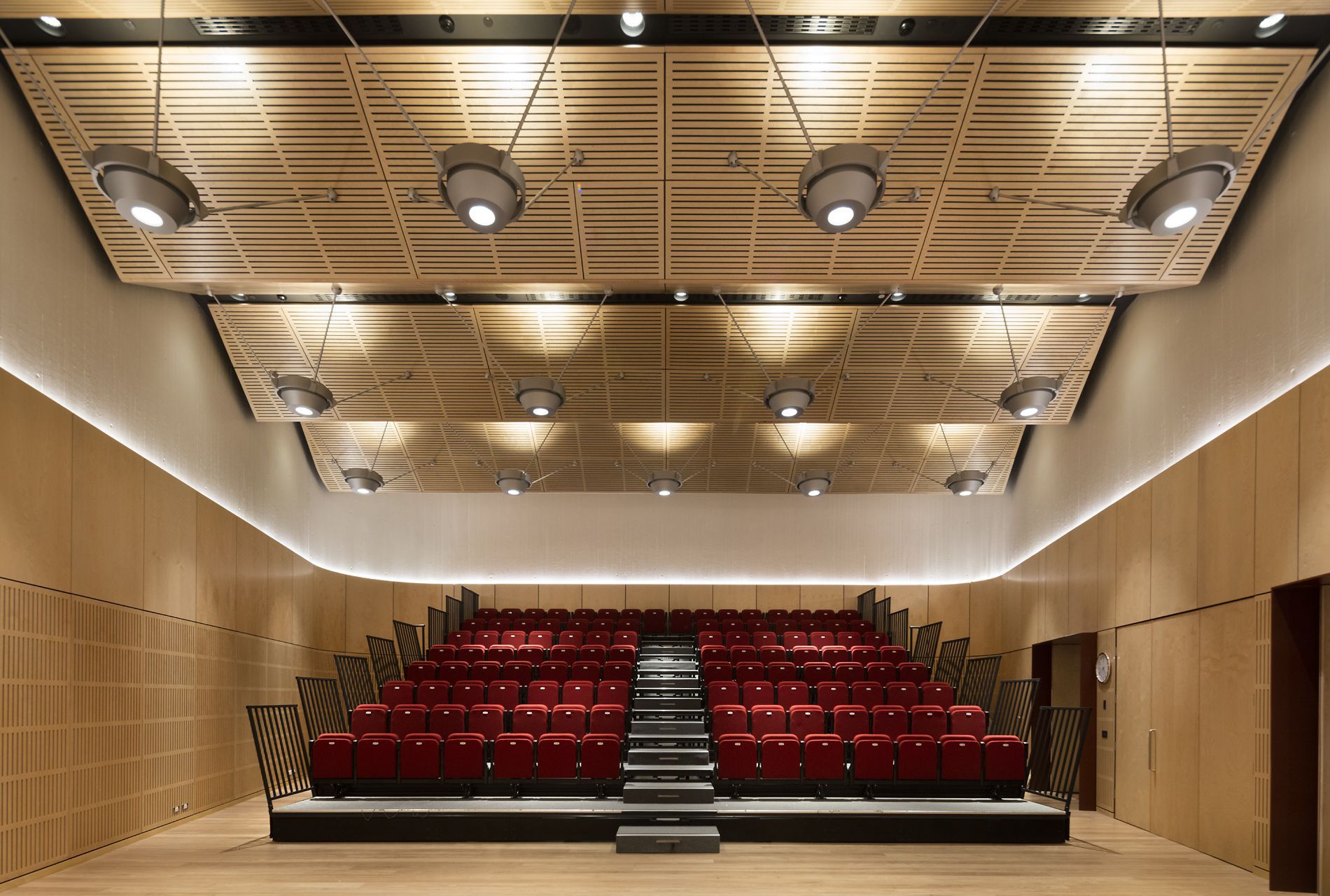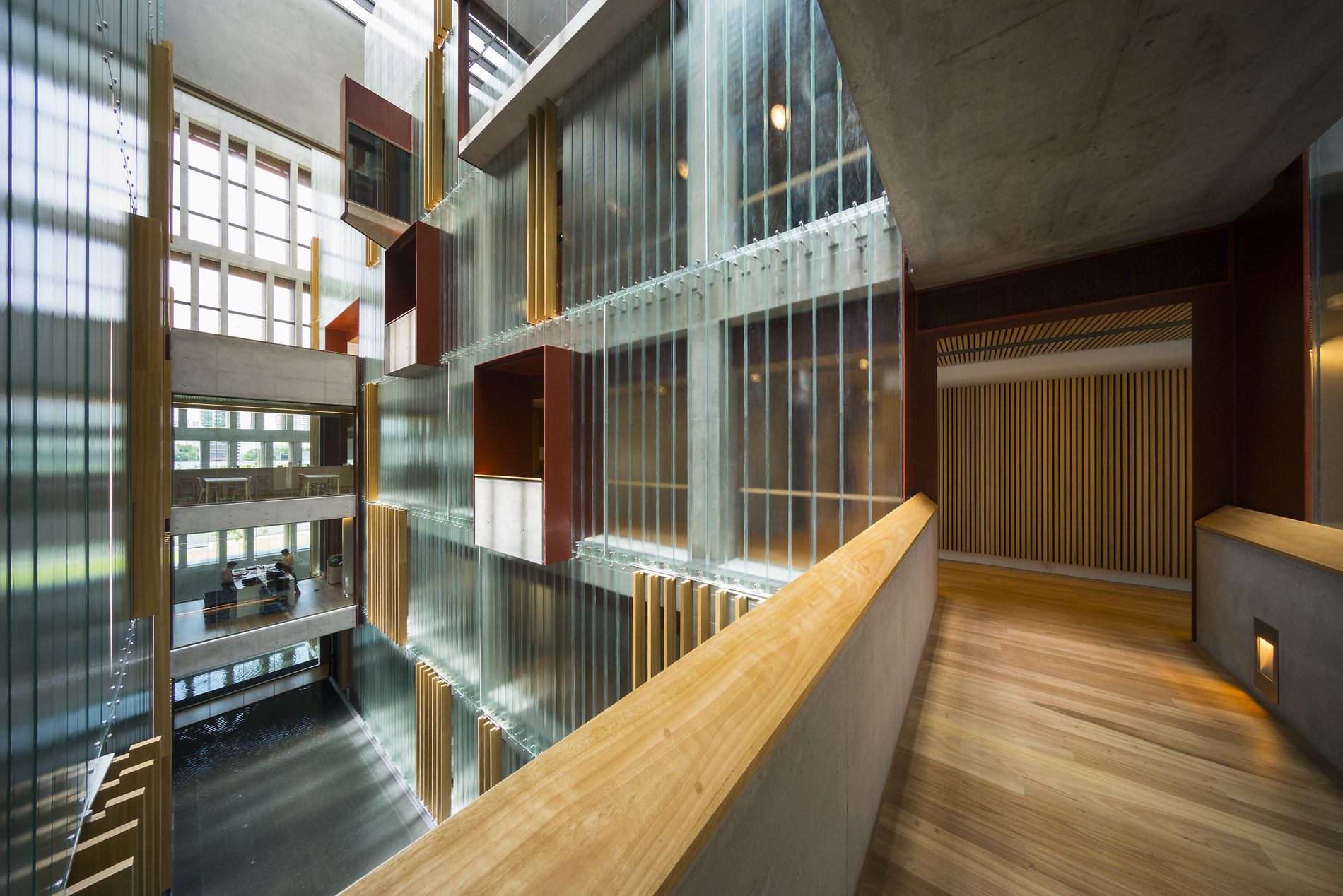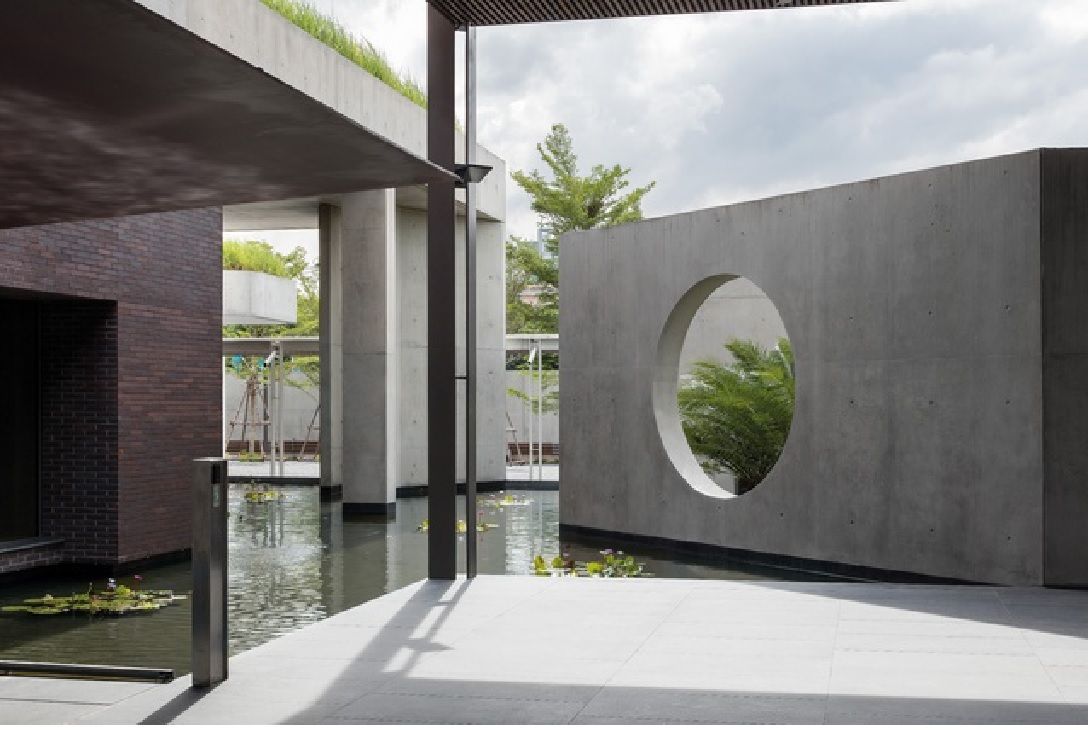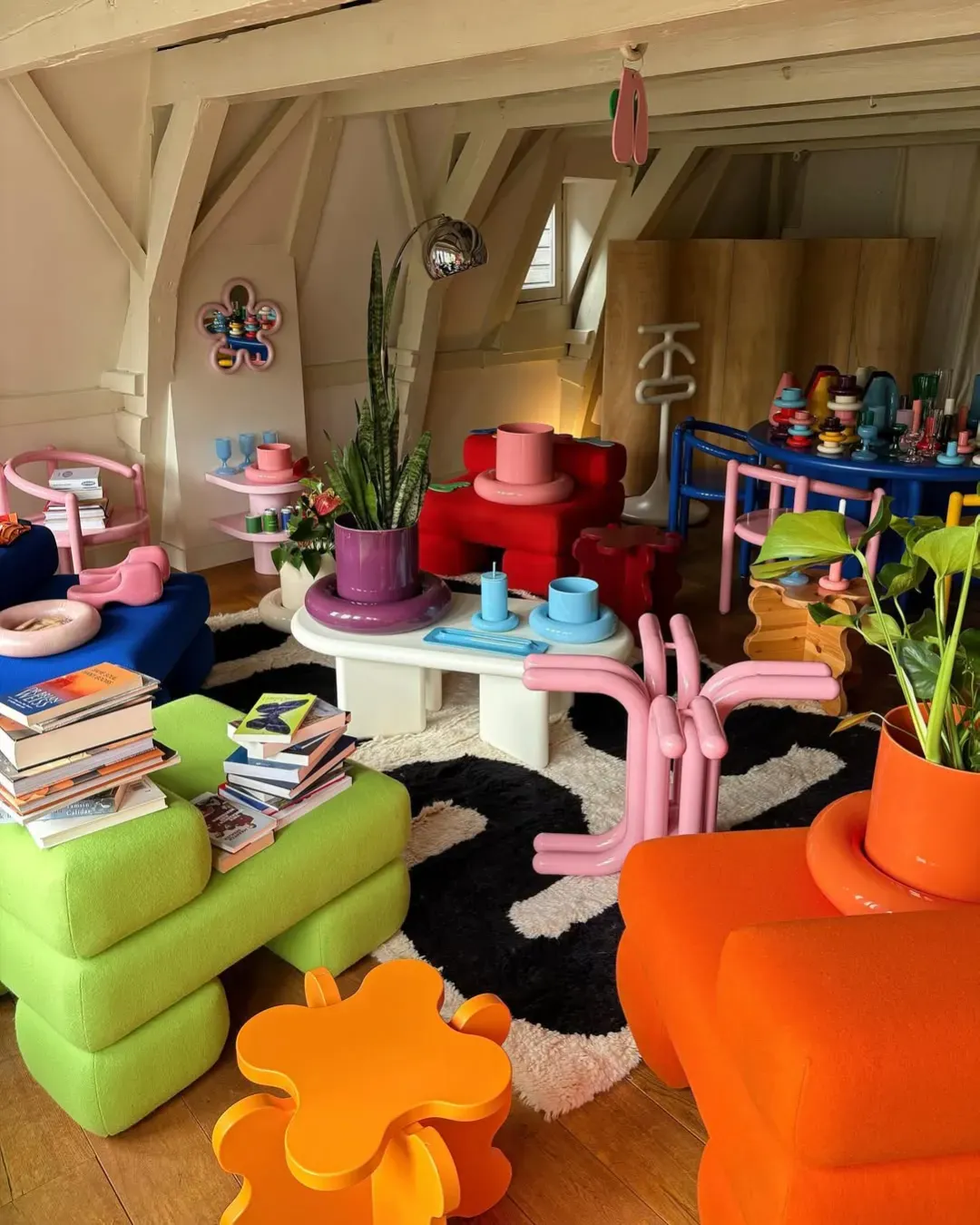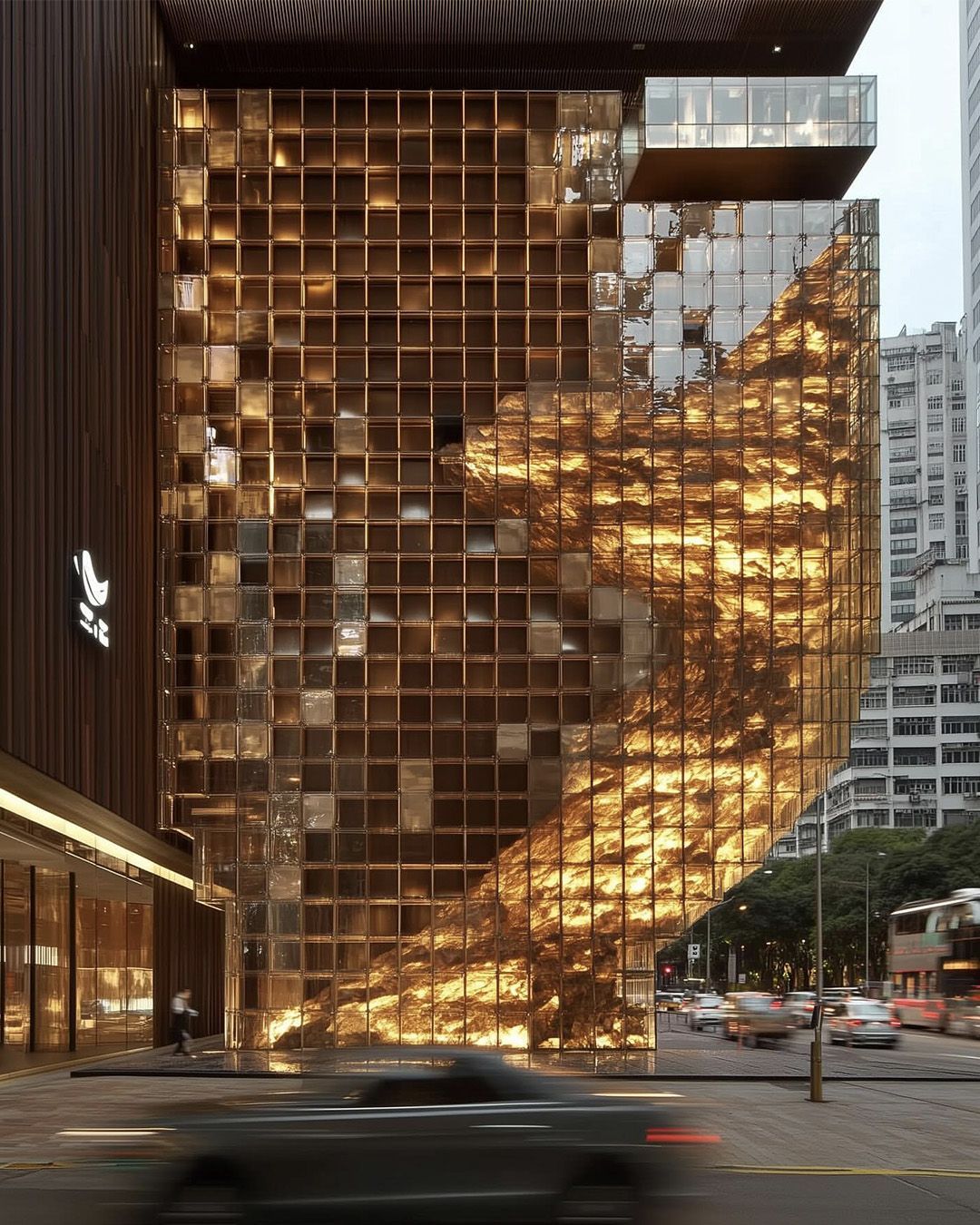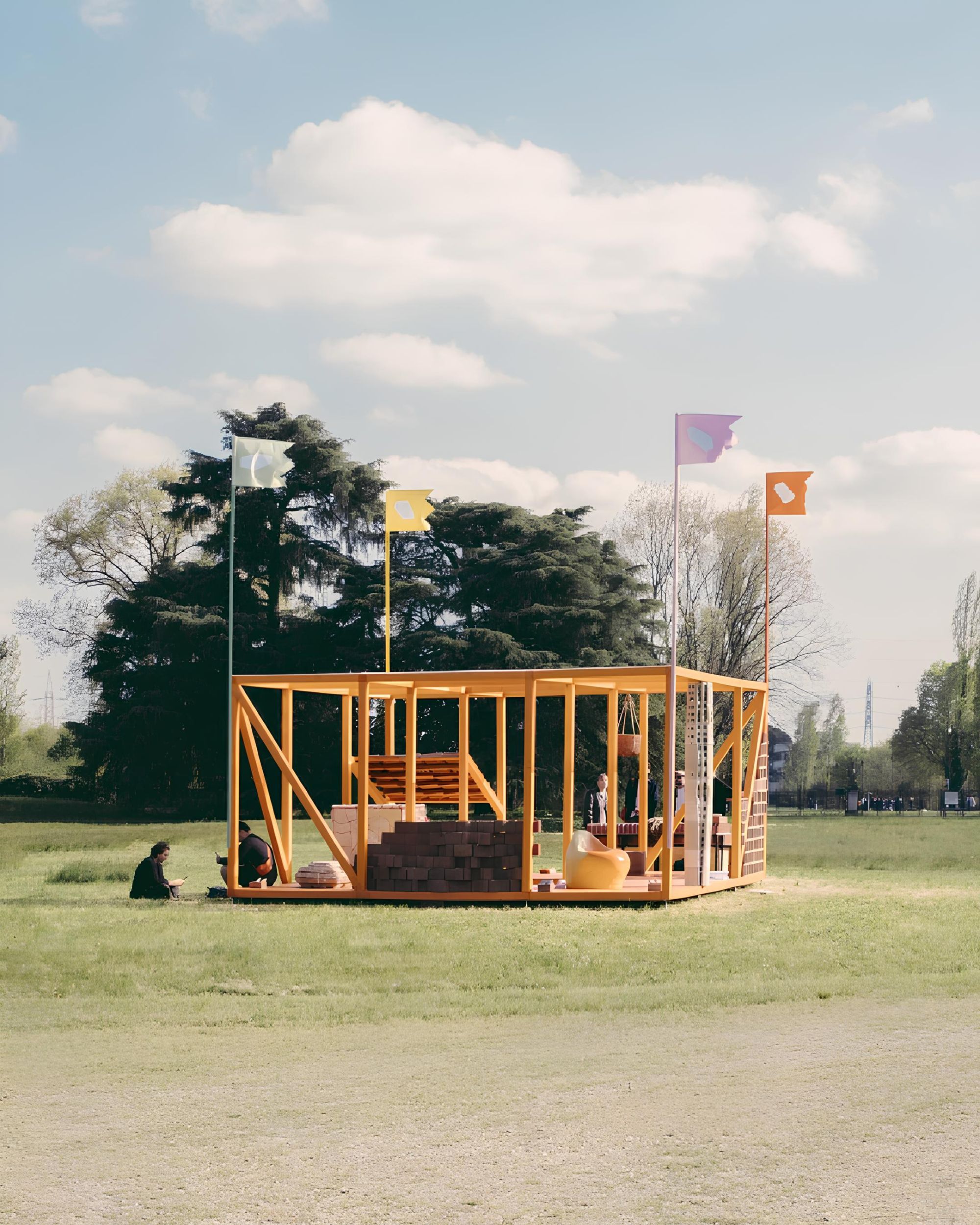
The Australian Embassy in Bangkok seals the encounter between two countries The BVN project explores the narrative potential of architecture through a juxtaposition of different traditions
Embassies are satellite buildings in foreign territory, but what if, instead, we consider them as meeting places between different policies and cultures?
This is more or less the thing the BVN studio has designed, designing the new Australian embassy in Bangkok.
The vocabulary of the architectural language of the building with its curved organic form, inspired by the natural landscape of the country of kangaroos and koalas, recalls the eroded canyons and the layered sand dunes of the landscapes carved by the wind, the random patterns of eucalyptus bark, the softly curved surfaces of river bed stones; while the color reflects both the deserts of Australia and the traditional Thai mon bricks.
Just the solid red brick walls, with their wavy shapes and smooth surfaces, are draped like curtains without weight, animated by the syncopated rhythm of the angled concrete tops that divide the window openings. This stylistic solution also chosen to confuse and minimize the shooting angles of potential snipers, exposes the thickness of the structure and suggests one of the fundamental characteristics of a modern government complex: the safety of personnel and its users.
Security yes, but discreet, mitigated in such a way that the building is able to instill a cheerful sense of calm.
All this is made possible by the water which, as is typical of traditional Thai architecture, animates both the external and internal spaces, reflecting the sun's rays and projecting brightness into all the workspaces.
A perfect example of this intercultural mix is the building of the chancellery, the fulcrum of the embassy's composition, which rises up through the surface of a square water level, connected through bridges and gardens to the other supporting buildings, each of which has its own independent form, different materials and a different way of relating to the unit water level.











































